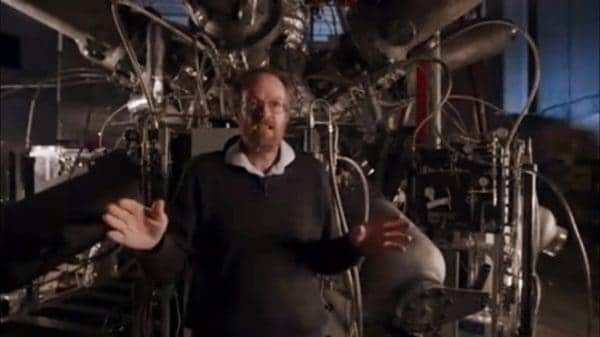Burnaby’s General Fusion featured in award-winning documentary on nuclear fusion


As opposed to nuclear fission which powers traditional nuclear plants (and comes with its well-known list of environmental concerns), fusion is touted as the clean alternative, never producing hazardous waste or greenhouse gases and only needing a cup of seawater as its power source. The only hitch being that, so far, attempts to create the conditions needed for fusion to occur have been incredibly costly, so much so that the energy inputs have been much greater than the rewards.
And yet scientists continue to offer up fusion, which harnesses the energy released when subatomic particles are joined up at incredibly high temperatures, as the holy grail of alternative energies. If only we could get the technology right.
But while international projects such as the ITER device in the south of France have cost billions and still remain decades away from being at the testing stage, smaller contributions from companies such as Redmond, Washington’s Helion Energy and Tokamak Energy in the United Kingdom are trying out sometimes less conventional approaches to fusion in hopes of striking gold.
Investors such as Jeff Bezos and Microsoft have poured more than $100-million into General Fusion…
Burnaby’s own General Fusion is among them. The company is featured in a new documentary on fusion energy called Let There Be Light, which premiered at this year’s South By Southwest Film Festival and played at Toronto’s Hot Docs and Vancouver’s Doxa. The company is no stranger to the spotlight, counting Jeff Bezos and Microsoft among its investors.
Created by Montreal-based filmmaker Mila Aung-Thwin, the film showcases both the science and the people behind the potentially game-changing technology. For his part, General Fusion founder and Chief Scientist Michael Laberge says the missing ingredient is momentum.
“Fusion right now is somewhat like airplanes right before the Wright Brothers flew for the first time,” says Laberge. “Once someone shows how it can be done, excitement will go up and then investment will pour in, but right now there is not much excitement in fusion.”
Earlier this year, General Fusion joined up with a group of Canadian universities and research institutes under the name Fusion 2030 to lobby the federal government to inject more funding into fusion so that Canada can be a leading contributor to the field.
“A well-defined national fusion program would be a catalyst for rapid innovation, job creation in the high tech and manufacturing sectors, and long-term strategic leadership in producing clean, reliable and sustainable energy,” reads the group’s Fusion 2030 Roadmap.
South of the border, California-based Tri Alpha Energy has already succeeded in garnering the needed interest and support, reportedly holding onto $500 million US in backing from groups such as Goldman Sachs and Paul Allen’s Vulcan. Tri Alpha is in the midst of building its Norman fusion reactor and says that it will need the data-crunching power of an exascale computer to do so.
In May of this year, General Fusion announced a partnership with Microsoft to use cloud-based data techniques to help analyze its data.
Below: The trailer for “Let There Be Light: The 100 Year Journey To Fusion”
Nick Waddell
Founder of Cantech Letter
Cantech Letter founder and editor Nick Waddell has lived in five Canadian provinces and is proud of his country's often overlooked contributions to the world of science and technology. Waddell takes a regular shift on the Canadian media circuit, making appearances on CTV, CBC and BNN, and contributing to publications such as Canadian Business and Business Insider.
